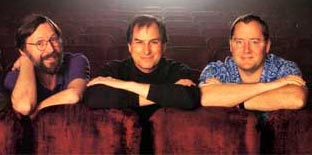What makes Pixar special (and the challenges ahead)

Bill Taylor and Polly LaBarre (both friends of mine from the early days at Fast Company) had a great piece in Sunday's New York Times headlined, `How Pixar Adds a New School of Thought to Disney.'
They write:
Since 1995, with the release of "Toy Story," Pixar's films have reinvented the art of animation, won 19 Academy Awards and grossed more than $3 billion at the box office. But the secret to the success of Pixar Animation Studios is its utterly distinctive approach to the workplace. The company doesn't just make films that perform better than standard fare. It also makes its films differently — and, in the process, defies many familiar, and dysfunctional, industry conventions. Pixar has become the envy of Hollywood because it never went Hollywood.
More than a few business pundits have drawn parallels between the flat, decentralized "corporation of the future" and the ad-hoc collection of actors, producers and technicians that come together around a film and disband once it is finished. In the Hollywood model, the energy and investment revolves around the big idea — the script — and the fine print of the deal. Highly talented people agree to terms, do their jobs, and move on to the next project. The model allows for maximum flexibility, to be sure, but it inspires minimum loyalty and endless jockeying for advantage.
Turn that model on its head and you get the Pixar version: a tightknit company of long-term collaborators who stick together, learn from one another and strive to improve with every production.
The piece goes on to focus on Pixar University, the company's extensive in-house training program: it offers more than 110 courses on filmmaking, drawing, sculpture, and writing.
Reading the piece got me thinking about the two challenges facing John Lasseter and Ed Catmull, the duo who'll now be running animation at Disney and Pixar:
- Preserving the culture and talent pool at Walt Disney Feature Animation
- Providing constructive oversight at both Disney and Pixar without slowing down the development and production process (they'll essentially be supervising twice as many movies, and trying to raise the quality of Disney's films while maintaining the quality of Pixar's)
If you want to read more on the road ahead for Disney and Pixar, I'd point you to two pieces from the LA Times last week:
- Pixar's Creative Chief to Have Special Power at Disney: Greenlighting Movies



0 Comments:
Post a Comment
<< Home